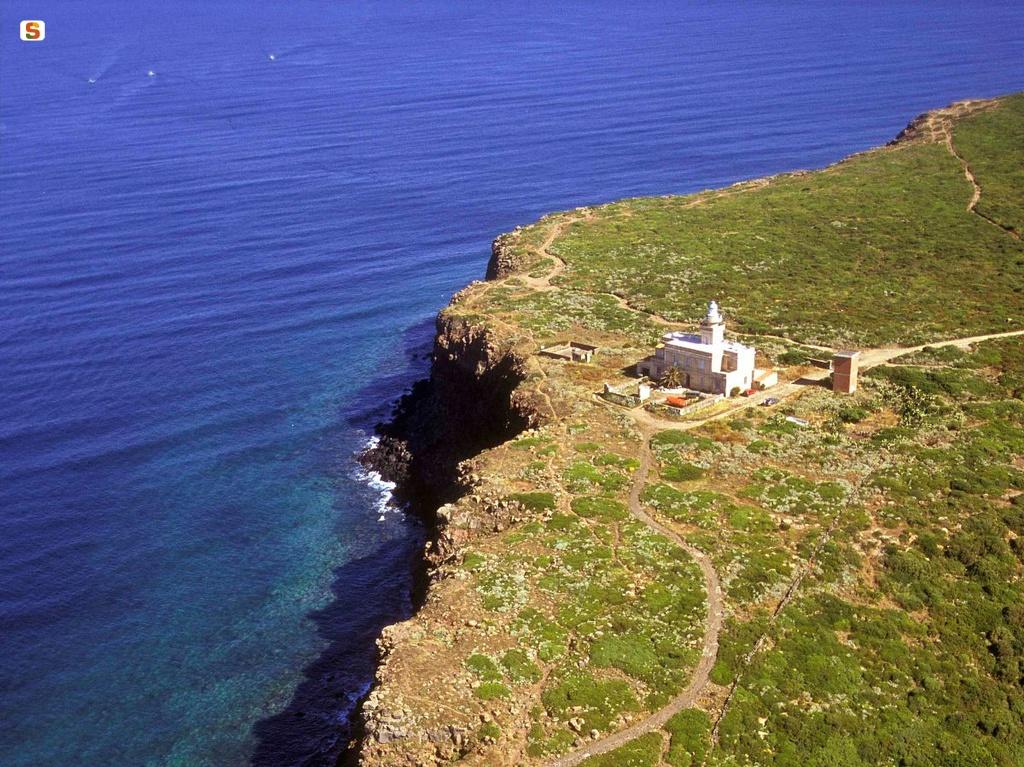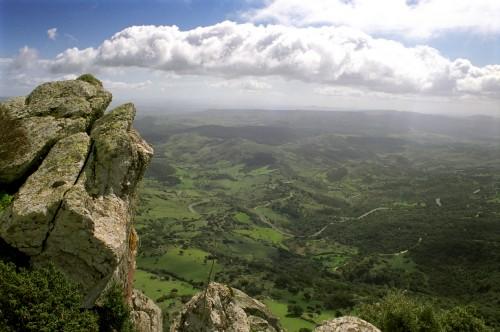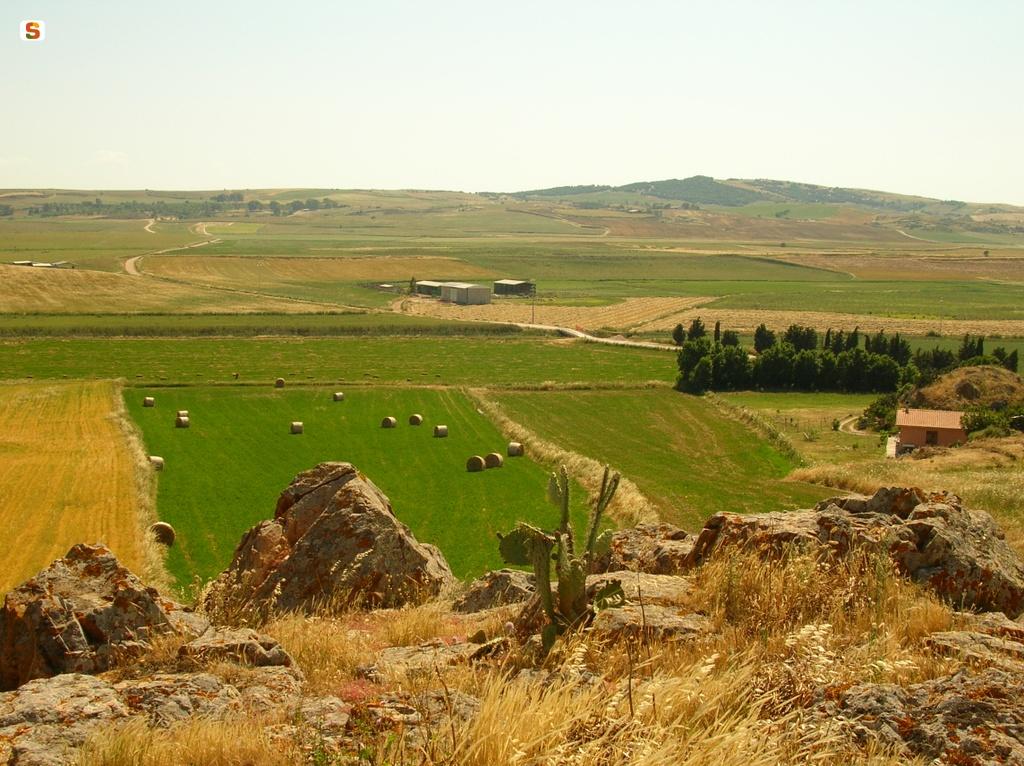Il Campidano di Oristano è una sub-regione della Sardegna occidentale, il cui territrio apparteneva anticamente al Giudicato di Arborea, e corrisponde a quello delle curatorie: Campidano di Milis, Campidano Maggiore (o di Cabras), Campidano di Simaxis, Usellus, Montis, Bonorzuli (fonte: Wikipedia).
La struttura ambientale di questo territorio si fonda sul sistema delle zone umide costiere che si estendono dal centro del Golfo di Oristano alla penisola del Sinis, fino a comprendere il compendio sabbioso di Is Arenas.
L’Ambito comprende il Golfo di Oristano dal promontorio di Capo San Marco a Capo Frasca, ed è delimitato a nord dalla regione del Montiferru e verso est dal sistema orografico del Monte Arci-Grighine. Si estende all’interno verso i Campidani centrali ed è definito a sud dall’arco costiero del sistema dell’Arcuentu e dal Capo Frasca, promontorio vulcanitico che rappresenta la sponda meridionale del Golfo, costituito da un tavolato basaltico, rilevato di circa 80 metri sul
livello del mare e delimitato da ripide scarpate scolpite dagli agenti meteo-marni, il cui territorio è attualmente soggetto ad esclusivi usi militari.
Questo territorio è articolato sui tre Campidani di Oristano e sul sistema idrografico del Tirso: il Campidano di Milis a nord, il Tirso come spartiacque fra il Campidano di Milis e il Campidano Maggiore, e il Campidano di Simaxis, che si estende dall’arco costiero alle pendici del Monte Arci.
Gli ambienti lagunari e stagnali che si sviluppano lungo la fascia costiera compresa tra Capo Mannu e Capo Frasca (Is Benas, Mistras, Cabras, Santa Giusta, Pauli Maiori, S’Ena Arrubia, Corru s’Ittiri e Corru Mannu San Giovanni e Marceddì), oltre a costituire il naturale sistema di espansione idraulica dei corsi d’acqua ed avere rilevanza paesaggistica ed ecologica, sono sede di importanti attività economiche quale l’allevamento ittico. Questi sono ambienti
produttivi che periodicamente vengono compromessi dallo stato in cui vertono questi ecosistemi, che richiedono un coordinamento nella gestione ambientale dei bacini di alimentazione.
La struttura dell’insediamento costiero presenta situazioni ibride (stagionali e permanenti) intorno ai principali centri: Oristano (borgata marina di Torre Grande), Arborea (Colonie Marine), Cabras (località marine di San Giovanni di Sinis e Funtana Meiga), San Vero Milis (S’Arena Scoada, Putzu Idu, Mandriola, Su Pallosu, Sa Rocca Tunda), Terralba (villaggio di pescatori di Marceddì).
Il Golfo è stato caratterizzato, a causa della concentrazione di risorse, dalla fondazione di tre distinti centri urbani di epoca fenicia, Neapolis, Othoca e Tharros. La città di Oristano rappresenta dal medioevo la sostituzione di un unico centro urbano, con sistema portuale sul golfo (Lo Barchanir alle foci del Tirso e Portus Cuchusius a Torre Grande), al posto del policentrismo dell'antichità e dell'alto medioevo (fonte: Piano Paesaggistico Regionale, scheda ambito n.9)
Campidano di Oristano is a sub-region of western Sardinia, whose territory belonged in ancient times to the Kingdom of Arborea, and which corresponds to the curatorie or administrative areas of: Campidano di Milis, Campidano Maggiore (or di Cabras), Campidano di Simaxis, Usellus, Montis, Bonorzuli
[source: Wikipedia].
The environmental structure of this territory is based on the system of coastal wetlands stretching from the centre of the Gulf of Oristano to the Sinis Peninsula, up to and including the sandy beach of Is Arenas. The territory features three coastal plains, the Campidano of Oristano, and the Tirso river hydrographic system: the Campidano of Milis lies to the north, the Tirso forms the watershed between the Campidano di Milis and the Campidano Maggiore, and the Campidano of Simaxis.
The lagoon and pond environments found along the coastal strip between Capo Mannu and Capo Frasca (Is Benas, Mistras, Cabras, Santa Giusta, Pauli Maiori, S'Ena Arrubia, Corru s'Ittiri and Corru Mannu San Giovanni and Marceddì), not only represent the natural hydraulic expansion system of watercourses and a great natural and ecological resource, but are also home to important economic activities such as fish farming.
The structure of the coastal settlements presents hybrid situations around the main centres: Oristano (seaside village of Torre Grande), Arborea (Colonie Marine), Cabras (seaside hamlets of San Giovanni di Sinis and Funtana Meiga), San Vero Milis (S'Arena Scoada, Putzu Idu, Mandriola, Su Pallosu, Sa Rocca Tunda), Terralba (fishing village of Marceddì).
The Gulf has been characterized by the founding of three separate urban centres during the Phoenician era, Neapolis, Othoca and Tharros. (source: Regional Landscape Plan, area sheet n.9)
slug
campidano-di-oristano





